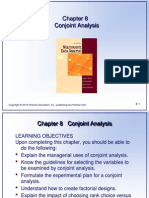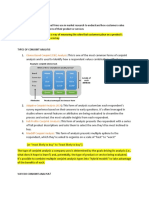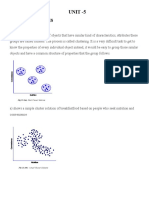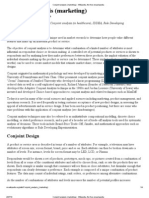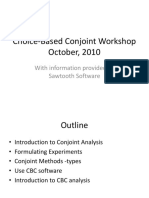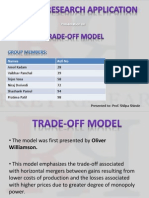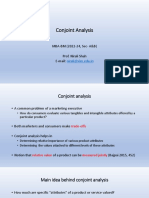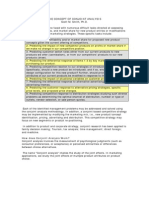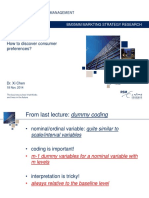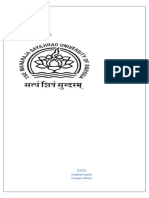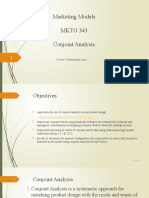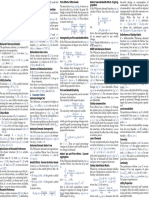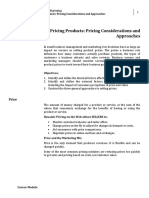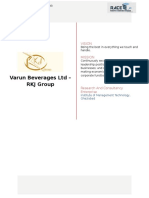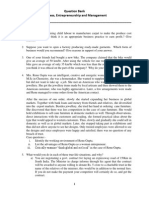Topic: Conjoint Analysis
Presented by:
Presented to: Prof. Jitendra Kumar Sharma Anshul Singh
Mudit Jaiswal
Nikhil Karotiya
� 2
Content
Conjoint Analysis
Conjoint Design
Types
Advantages
Process
Conclusion
� Conjoint Analysis
Conjoint analysis is a form of statistical analysis
that firms use in market research to
understand how customers value different
components or features of their products or
services. It’s based on the principle that any
product can be broken down into a set of
attributes that ultimately impact users’
perceived value of an item or service.
3
� Conjoint Design
We can describe a product or service in terms of several
attributes further broken down into several levels. E.g., a
Mobile Phone may have attributes like screen size, color, brand,
price, and so on, and levels for screen size maybe 5 inches, 5.5
inches, or 6 inches.
Attributes should be relevant to managerial decision-making,
have varying levels in real life (at least two levels), be expected
to influence preferences, be clearly defined and communicable,
and not exhibit strong correlations (price and brand are an
exception).
Levels of attributes should be unambiguous, mutually
exclusive, and realistic.
The profile is a unique combination of attribute levels. 4
� Types
2. Rating-based conjoint: Also called
Score-Based conjoint analysis.
1. Ranking-based conjoint: Also called
Respondents give ratings to the product 3. Choice-based conjoint: Respondents
Preference-based conjoint analysis.
profiles they are shown. Ratings can be choose which option to buy or
Respondents rank the profiles from best to
on a scale of 0 to 5, 0 to 10, or 0 to 100. otherwise select. The choice-based
worst. It is similar to best-worst scaling, but
Respondents must allocate scores so method is the most theoretically sound,
respondents must allocate rankings to the that the scores add up to a certain practical, and common practice.
intermediate options.
number (e.g., all scores in each question
must add up to 100).
5
�Advantages
It helps researchers estimate the tradeoffs that consumers make on a
psychological level when they evaluate numerous attributes simultaneously.
Researchers can measure consumer preferences at an individual level.
It gives researchers insights into real or hidden drivers that may not be too
apparent.
Conjoint analysis can study the consumers and attributes deeper and create a
needs-based segmentation.
6
� Conjoint Process
Describe your research objective and the target product. List down the research questions
to answer.
Create the combination or product profiles (Specify Attributes & Levels).
Select the controlled set of “product profiles” or “combination of attributes & levels” for
the consumer to choose from.
Design the Questionnaire (Based on the abovementioned types) and collect responses.
Perform conjoint analysis
Report and Interpret results
7
� Conclusion…
Conjoint analysis is an effective market
research technique that helps businesses
better understand their customer’s
preferences and make educated decisions
about product creation, pricing, and
marketing strategies.
8
�9



















